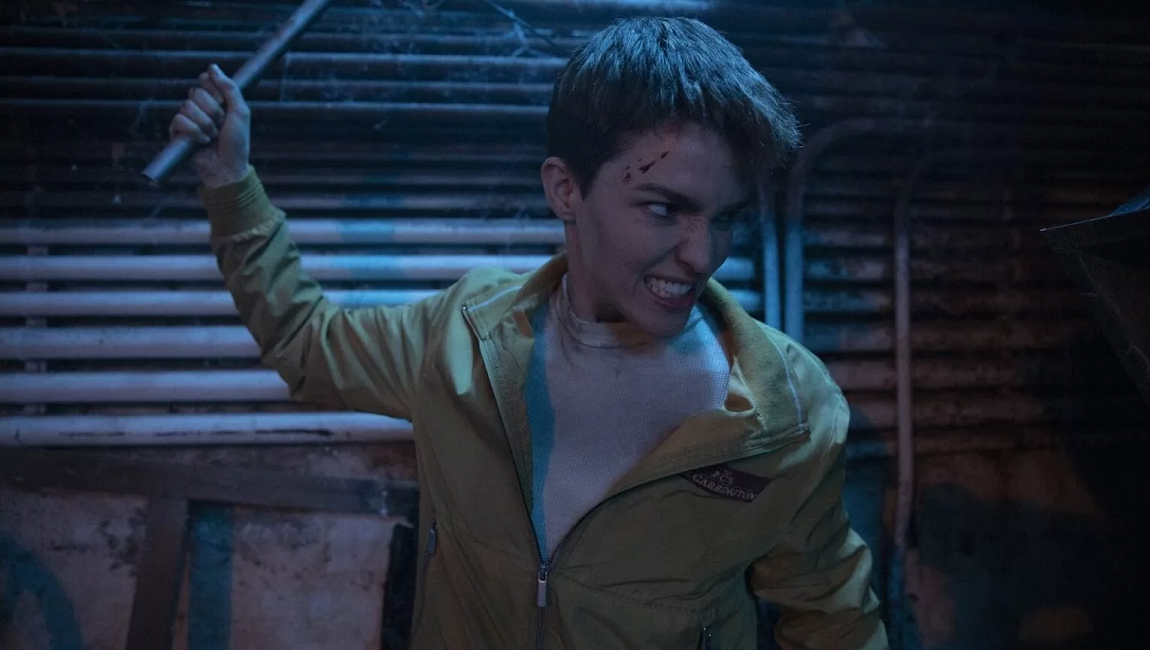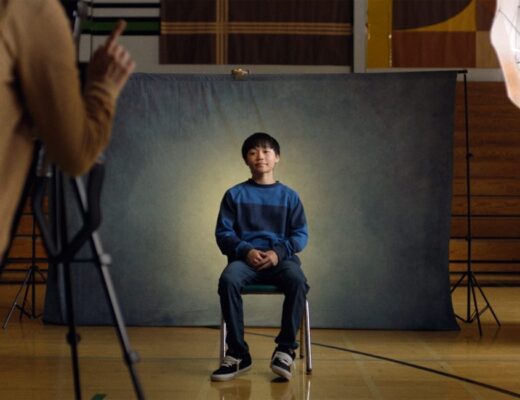It’s perhaps presumptuous, a little reductive even, to speak of an artist’s filmography as movements or periods, particularly when they are still making new, vital work. Still, it’s useful to look at 2009’s Face as both a kind of grand summation of certain formal concerns and a breeding ground for new avenues of aesthetic exploration for director Tsai Ming-liang. It would take the director almost five years to make another feature length film, 2013’s Stray Dogs; the interim found him focusing on shorts and site-specific installation work that would come to inform the pared down, (even more) minimalist features that followed (the aforementioned Stray Dogs and, most recently, Days). Like all of Tsai’s features, Face has a narrative proper, although laying it out in a linear fashion does a disservice to Tsai’s oblique approach to story. Produced in part by the Louvre, Face follows Tsai regular Lee Kang-Sheng, here playing a director, as he makes a filmed version of the myth of Salome in the museum. It’s a virtual compendium of Tsai’s regular obsessions, including his love of La Nouvelle Vogue and Truffaut, who. Tsai essentially attempts to resurrect here through the presence of Jean-Pierre Léaud, Jeanne Moreau, Fanny Ardant, and Nathalie Baye, as well as references to The 400 Blows and Day For Night. Water is, of course, a recurring obsession, as well as the preparation of meals and furtive sexual encounters (Mathieu Amalric plays a man cruising for sex in a brief, wordless cameo). Most welcome is the return of Lu Yi-ching, who had played Lee’s onscreen mother in Rebels of the Neon Gods, The River, What Time is it There? and The Wayward Cloud. As Lee prepares to make his film, Lu passes away and returns as a ghost, another link to a previous film (Lee feared his deceased father might return as a ghost in What Time is it There?).
For all his fascination with isolation and ennui, Tsai isn’t given enough credit as a skilled director of comedy, and Face is one of his funniest films.
Despite these various connective threads, Face is hardly a rehash or jumble of greatest hits. Tsai seems invigorated by the change in scenery, using the resources of the Louvre to stage some of his most elaborate tableau compositions. He revels in artificiality, using fake snow, mirrors, tunnels, and, in one scene, a live deer. Supermodel Laetitia Casta is Lee’s leading lady in the film-within-a-film, and Tsai dresses her in increasingly outlandish costumes. For all his fascination with isolation and ennui, Tsai isn’t given enough credit as a skilled director of comedy, and Face is one of his funniest films. One scene finds Casta trying to navigate a narrow staircase while wearing a ridiculous bejeweled gown with a long train that she can barely lift. Another finds Lee trying to plug a broken faucet that quickly floods his small apartment, a glorious bit of slapstick worthy of the old silent greats. Tsai makes room for several musical sequences, some lip synced by Casta and all accompanied by gorgeous visuals. All of Tsai’s films are beautiful in their own way, but Face might be his most pleasurable to simply gaze upon. Appropriately, given the film’s title, Tsai seems willing, even eager, to put his camera closer to his actors than ever before. The climactic sequence of a half naked Casta writhing over the prone body of an incapacitated Lee sees the only extreme close-up I can recall in Tsai’s mature work, an almost radical aesthetic act for him. Befitting a master of the form, it’s thrilling to see how he can still shake things up after all these years.







